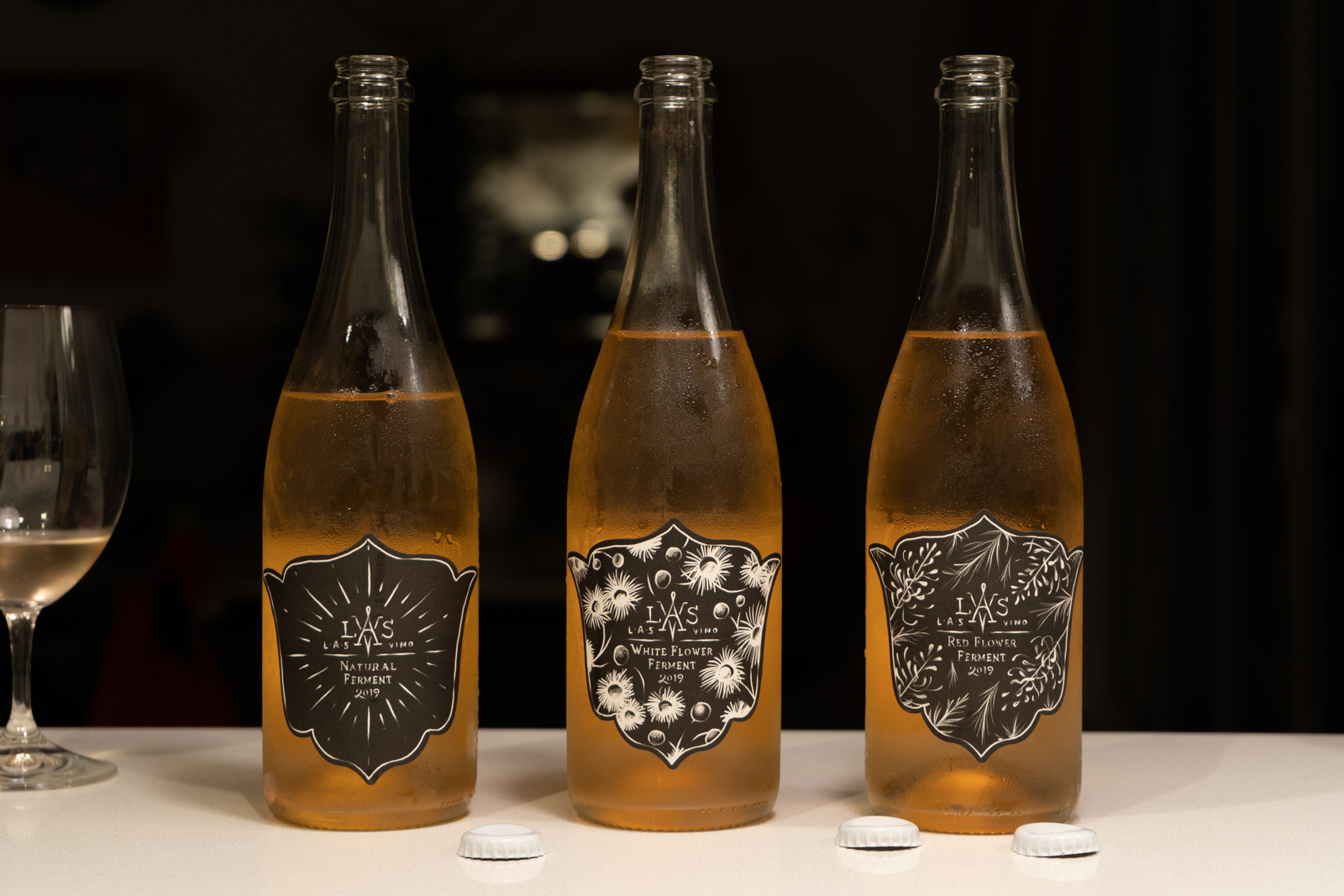Flower Ferment Rose 2019

LAS Vino Flower Ferments, Pinot Noir Rose 2019
In the spirit of tasting wine at home in these crazy, turbulent times of 2020, I am lucky enough to be facing off with a most unique trio of wines. Nic Peterkin of L.A.S. Vino (Margaret River, WA) has ventured into a very (very) interesting space and has made three iterations of the same base wine. One lot of Pinot Noir rose split into three barrels. One fermented using wild, indigenous yeast. The Natural Ferment. Another inoculated with the yeast of the Corymbia calophylla flower. The White Flower Ferment. And a third fermented with the yeast of the Grevillea banskii flower. The Red Flower Ferment. Nothing gets me going more than a dive into the specifics of variation – no more so, as a keen gardener, than in this case – why does this taste the way it does. Does it taste any different. How. YES. We are so fortunate to live in such a biologically diverse environment and while we frequently look to Europe for flavour inspiration, we are actually drowning in options right here – we just have to look.
Natural Ferment
Creamed red cherry, pomegranate, red apple skin, strawberry…. Brioche, cheese cloth and spice. Pink peppercorn and… star anise? The Natural Ferment, as is the same for the White and Red Flower Ferments, spent a year in oak after fermenting (wild, with natural yeasts) for five months – it is dry and creamy, far from sweet, yet deeply satisfying in a plush, luxurious kind of way. Generous and full, it is complex and reminiscent of Champagne in that it is textural, layered and complex. This is rose turbo charged. It isn’t restrained, it’s bursting at the seams with flavour and texture and exciting things [and for the first time in a long time I really really really want to drink it for fun, not for work.] This is seriously good, an equal match to an intricately flavoured meal made from native Australian ingredients. YES… Big yes. 96/100
White Flower Ferment Corymbia calophylla
This has a slightly greener nose: greener in the way that lychees and apples and honeydew melons speak of green. There is still the summer raspberry, white pepper and Christmas cherry, but the White Flower Ferment does not exist on a singular plane of flavour. The palate has an electrifying tone; a very clear and pristine note of flower, bud and life. It’s hard to put my finger on it… but there is a fruit tingle lift, a sherbet fizz to the acidity. There is energy and bounce. Where the Natural Ferment is serious, this is memorable and unique and pretty. It is tension and energy. The White Flower Ferment was fermented with the indigenous yeast of the Coymbia calophylla flower – it then spent a year in oak. The oak gives it textural complexity and ‘plump’. When I think of the delicate visual burst of the Corymbia calophylla flower (the Marriwood blossom, which the winemakers in Western Australia rely on for their protection from hungry Silvereyes) it’s right for the flavours of this wine: many, pretty, moving. The meaning of ‘calophylla’ is Greek: calo (or cali), meaning beautiful and phyllon; leaf. 95/100
Red Flower Ferment Grevillea banskii
None of the green glints on the nose, this is balanced in its display of energy, youth and brightness. An interesting intersection of the two wines, I’m delighted to have tried them in this order. The middle of two extremes, the balance of ying and yang – the Red Flower Ferment contains all the seriousness and calm of the Natural Ferment, combined with the youth, vitality and tension of the White Flower Ferment. Made in the same way as the Natural and White Flower Ferments, the Red Flower Ferment was fermented with the indigenous yeast of the Grevillia banksii flower and aged for a year in oak. Perhaps softer and plusher than the White Flower, if only on the mid palate. The native Australian bush the Grevillea banskii is one of the best plants to put in the ground in your garden if you want to attract birds, insects and life. Apt, if you consider the calm, stoic vitality of this beautiful rose. 94/100
*If I had to guess at these blind I would not be guessing Australia, something about the fruit profile sits mid-palate and plumes through the finish, taking this very definitely into European territory for me. Fascinating, given the extremely local origin.
